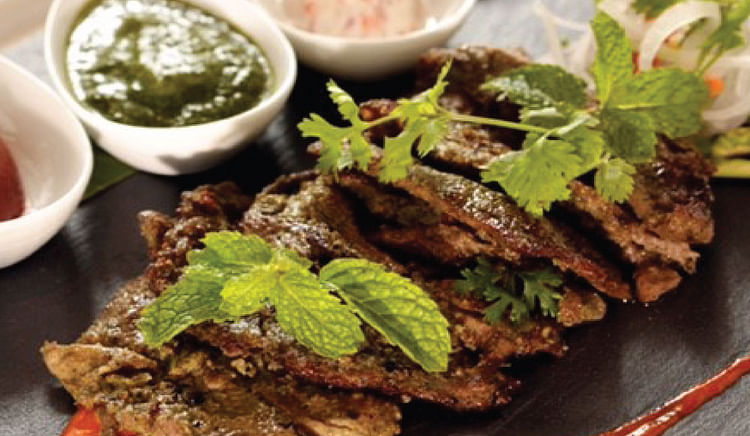
Mention Hyderabadi cooking to Chef Arun Sundararaj and visions of him leaping over boulders in the stone quarries on the outskirts of Hyderabad come to his mind. But what was a white-coated chef doing outside his five-star kitchen, that too, in a granite quarry?
When Sundararaj, who now heads the kitchen at the Taj Hotel, Mansingh Road, was posted to Hyderabad, the first piece of equipment he had to acquire for the Falaknuma kitchen was a block of granite. Just as the tandoor is used extensively in Punjab and Haryana, blocks of granite are used to cook Pathar Kabab in Hyderabad. For a small restaurant, the kitchen had to turn out at least 25 portions of the dish every day.
Sundararaj soon learnt that the size of a block needs to be between 3 and 5 inches thick and 3 x 2 feet in length and breadth. The block is never moved once it has been installed, so with care, it should last a lifetime or two. At first, Sundararaj and his kitchen went through a dismaying number of granite slabs: one cracked because of too much heat, applied too quickly, another few cracked because of some mysterious alchemical process. Unwieldy blocks of granite are elemental to the process of grilling Pathar Kabab, and soon, Sundararaj began to acquire the eye of a connoisseur. During a visit deep into the bylanes of the old city around the Charminar, he spied a street stall owner bent over his block of granite, turning out Pathar Kababs with the precision borne of long practice and asked him how old his slab of stone was. “Over 50 years,” came the proud reply.
The trick is the thickness of the stone. Too thin and it won’t withstand heat. Too thick and enough heat won’t penetrate to the surface. Soon enough, Sundararaj discovered that the only way to buy a serviceable stone was at the quarry rather than in a utensils market. The stone had to be free of a line of calcification, which is the very property of stones like granite and marble: it is a line which becomes glossier than the rest of the surface after being polished. Highly sought after for a figurine or a floor, but anathema to those who cook on its surface, because the calcification is inherently weak and cannot withstand much heat. Sundararaj became an expert on granite that had a vein of calcification in them – probably a quality that few other chefs possess! Quarries have little use for blocks with hardly any design or pronounced colour, but those are the very pieces that make great cooking stones.
A granite block needs to become polished by regular use and not by buffing. Heating it up slowly and letting it cool down before repeating the process, is the one standard way of ensuring that the block becomes seasoned. And brushing the surface with oil results in an even coat, unlike, say, a non-stick pan where surface tension takes place, resulting in droplets of oil forming.
“The end result of a Pathar Kabab justifies all the trips to a quarry,” is the opinion of this chef. “The strip of lamb becomes crisp on the surface, yet tender inside because it holds its juice. That’s more than you can say for any other means of cooking.”
Written By
Appearing incognito is The Phantom's style, so we are keeping this identity under wraps. What we can tell you is that this is one food critic that has earned the respect of restaurateurs and foodies alike. With an astute palate and an adventurous spirit, the Phantom Critic has more than 20 years of experience writing about food and reviewing restaurants

